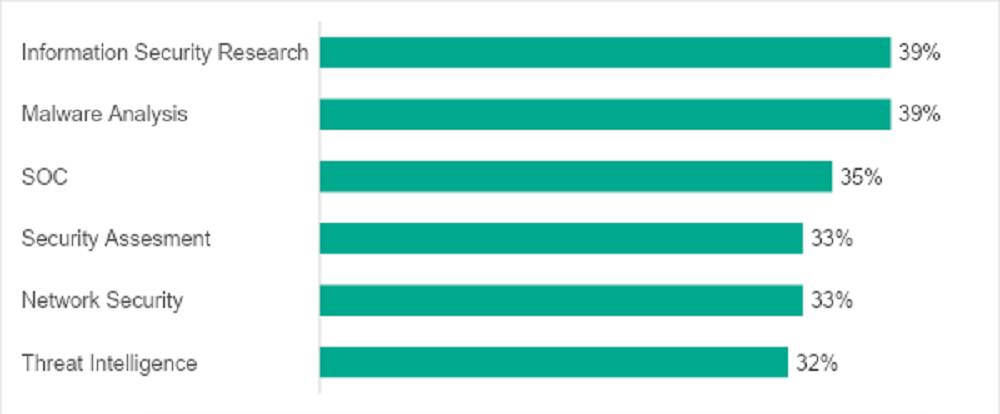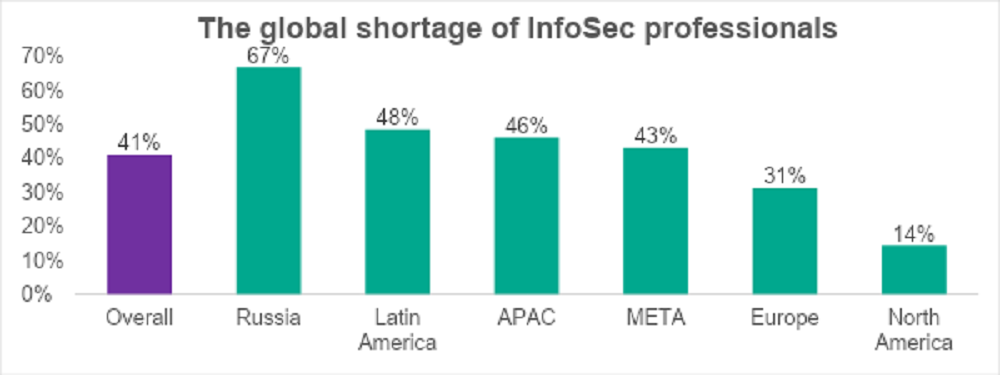According to the recent Kaspersky study, more than 40% of companies worldwide are facing a shortfall of qualified cybersecurity professionals. Most understaffing can be found among malware analysts and information security researchers.
As the frequency and complexity of attacks increase, and the demand for InfoSec professionals in business grows, the number of practitioners meeting the company’s requirements for skills and level of expertise is declining.
Studies carried out by cybersecurity companies and international organizations have already highlighted the lack of InfoSec professionals. Research conducted by (ISC)2 cybersecurity workforce study revealed that the workforce gap was almost 4 million InfoSec workers in 2022.
Kaspersky conducted its own research “The portrait of modern Information Security professional” in order to evaluate the current state of the labor market and analyze the exact reasons for the cybersecurity skills shortage.
The research surveyed more than 1,000 InfoSec professionals from Asia-Pacific, Europe, the META (Middle East Turkey and Africa) region, North and Latin America.
The study found that 41% of the companies questioned describe their cybersecurity teams as “somewhat” or “significantly understaffed”. Russia reported the largest cybersecurity staff shortage, followed by Latin America, Asia Pacific and META.
Overall, the respondents said the most understaffed roles are information security research and malware analysis with more than 40% of companies named them the hardest to fill in. The increased demand for these positions was reported by Europe, Russia, and Latin America.
Security Operations Center (SOC), Security Assessment and Network Security professionals are slightly less understaffed at 35% and 33% respectively.
The shortage of SOC experts was particularly noticeable in Asia Pacific, while the shortage of security assessment and network security analysts is mainly a concern in META.
The role with the least number of vacancies, but still in high demand, is Threat Intelligence (32%).
Looking at cybersecurity needs across industries, the government sector reported the highest demand for cybersecurity practitioners, and admitted that nearly half (46%) of the Infosec roles it required remain unfilled.
The telecom and media sectors are understaffed by 39% followed by retail & wholesale and healthcare with 37% of its roles remaining vacant.
Industries that had the fewest Infosec vacancies are IT (31%) and financial services (27%), but alarmingly, the figures still hovered close to one third.

“To reduce the shortage of qualified InfoSec professionals, companies offer high salaries, better working conditions and bonus packages, while also investing in up-to-date training with the latest knowledge. However, the research results show that these measures are not always enough,” commented Vladimir Dashchenko, security evangelist for ICS CERT at Kaspersky.
“The growth rate of the domestic IT market in some developing regions is changing so rapidly, the labor market cannot manage to educate and train the appropriate specialists with the necessary skills and expertise in such tight deadlines. On the contrary, regions with developed economies and matured businesses do not report such an acute shortfall of InfoSec professionals as their rates are below market average.”




